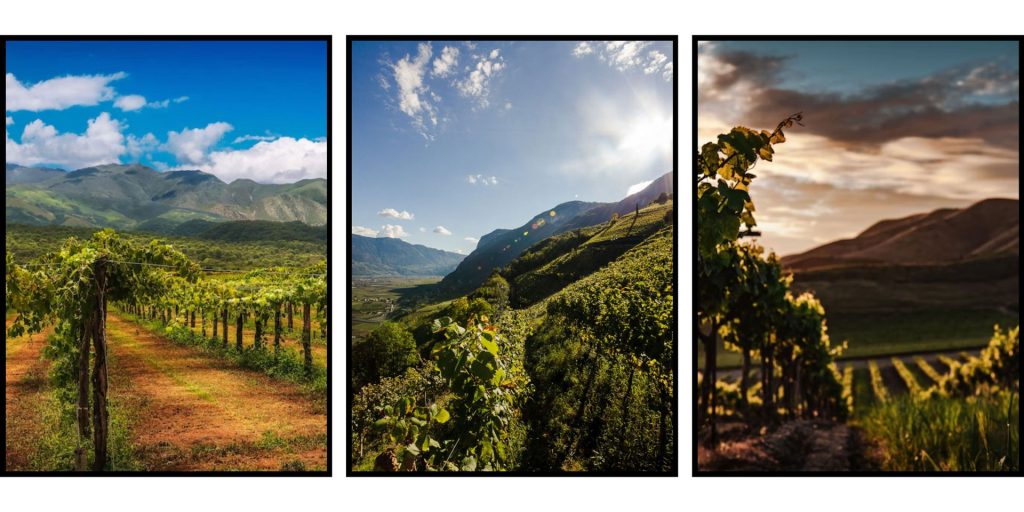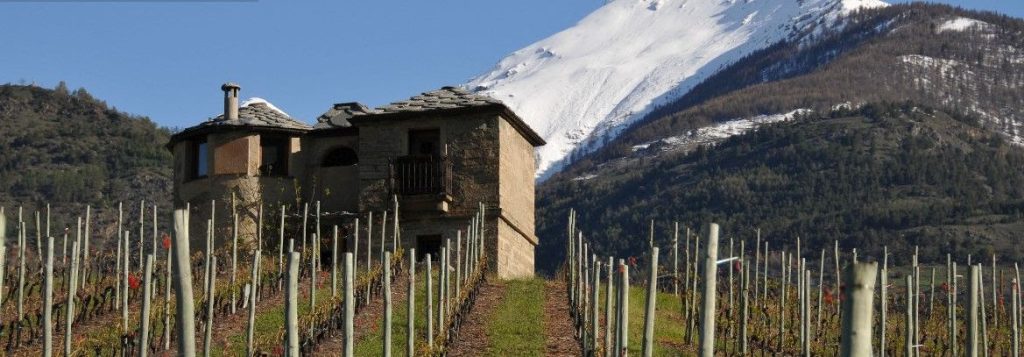In our April newsletter, we talked about soil, one of the many factors that affect a wine’s style and quality. This month we look at another: elevation. The altitude at which a vineyard is planted has a drastic impact on both the grapes and the wines they produce. Elevation affects climate — the temperature falls 0.6ºC for every 100m of elevation — and climate plays a major role in the vineyard and in the glass. Even slight differences in elevation can greatly alter a wine’s body, structure (acid and tannin), aromatics and flavours. Elevation is the primary reason why Chardonnay from California can taste entirely different than Chardonnay from France.
What qualifies as a high-altitude vineyard or wine? That depends on where in the world you are. For instance, in California, vineyards planted at 500 metres above sea level (MASL) are considered very high. Conversely, in Argentina almost all vineyards are planted between 600 and 1,100 MASL, so the standard is much ‘higher’. For a point of reference, the Niagara Escarpment sits at roughly 175 MASL.

High-altitude wines have become increasingly popular of late, as wine writers and drinkers come to appreciate their freshness, elegance, structure and drinkability. By contrast, wines made from grapes grown at lower elevations, in warmer climates, tend to produce bigger, jammier wines that are higher in alcohol and are often accompanied by sweet oak character. Added to this style trend are the challenges of climate change, which are impacting vineyards throughout the world. Growers and winemakers are struggling to adapt. In an attempt to counteract rising temperatures, and to moderate alcohol levels and maintain balance in their wines, they are picking grapes earlier than ever, altering canopy management (how a vine is trained and pruned) and even changing which varieties are planted where. Now, more than ever, there is a premium on cooler, elevated vineyard sites, especially in the world’s warmer wine regions, like parts of Australia, Argentina, Sicily and California.

2. Elevation brings more direct and concentrated sunlight. For every 300m of altitude, UV levels increase by 10%. There are a few benefits to all of this bright sunshine, chief among them being the forced development of thicker, tougher grape skins, which increases the levels of anthocyanin and polyphenols, the molecules that give wines aromas and flavours. Also referred to as phenolic ripeness, it is critical to a wine’s depth and complexity. Thick, ripe skins also aid in colour and tannic structure, the latter contributing to a wine’s ability to age gracefully. When combined with elevation’s effect on gradual ripening, you get wines with both intensity and balance.
3. A soil’s ability to drain water is incredibly important in a vineyard. You want the vines to have ‘dry feet’, so they’re forced to dig deep into the bedrock to absorb water and nutrients, naturally decreasing yield and producing higher quality grapes. Low-lying, fertile soils don’t drain well. Conversely, the soils in elevated vineyards are usually found on slopes and are almost always very poor, with outstanding drainage properties.
4. Generally speaking, elevated vineyards have better airflow, usually a result of more consistent and stronger winds. Airflow is important in a vineyard, to dry out grape bunches during the wet season, inhibiting disease and rot. Healthier grapes require far less chemical treatment, so you’ll often find the best wine regions for organic farming are windy and at some degree of elevation. Wind has also been shown to restrict yields and create smaller berries on the vine. This means a higher skin-to-juice ratio and, in turn, wines with great depth and complexity.
Buyers+Cellars places great import on high-altitude wines, which have been a cornerstone of our portfolio since our inception. As we head into Spring and Summer, characterful wines with freshness and elegance take centre stage. Highlighted below are selections from some of the world’s most renowned, high-elevation regions, each one the perfect accompaniment to backyard gatherings with food, family and friends.
Purchase by the case through the links below OR sign up for our June Wine Club, where you will receive 1 bottle of each!
Kurtatsch Pinot Bianco, Alto Adige, Italy
Known in France as Pinot Blanc and in Germany as Weissburgunder, this white mutation of Pinot Noir makes refreshing, mid-weight wines, often with notes of white flowers and stone fruit. Kurtatsch’s Estate offering is harvested by hand from vines planted at 500-650 MASL. Fermentation takes place in stainless steel tanks, followed by maturation on the lees in large, wooden barrels. This Pinot Bianco has more structure and complexity than most, with a creamy, rounded texture and hints of salty minerality.
Alandes Paradoux Red, Uno Valley, Argentina
93 Points, James Suckling
This Bordeaux blend mixes in equal parts Cabernet Sauvignon, Cabernet Franc, Merlot, Petit Verdot and Malbec. While Bordeaux is one of the lowest-lying regions in the wine world, Paradoux comes from one of the highest, the Uco Valley, a region producing some of the most influential wines of Argentina. The valley has desert-like conditions, with cold winds blowing in from Patagonia. At its north end, hills reach 1400 MASL. Big, bold dark fruits — plum, blackberry and cassis — mix with mocha and some classic pencil shavings. On the palate, it’s plenty weighty, but the tannic backbone and marked acids make it far from ponderous. The dark fruits are not stewy or dried. The finish is long, fruit-driven and contemplative.
Les Crêtes La Sabla, Aosta Valley, Italy
Aosta Valley wines are rarely seen outside this tiny region that is located in the shadow of the Italian Alps. This is a field blend of rare, indigenous Aosta grapes hand-sourced from 70-year-old vines planted at 650 MASL. This wine perfectly exemplifies extreme elevation wines: darkly-coloured, loaded with complexity and character while, at the same time fresh, elegant and highly drinkable. Cassis, black cherry, ripe strawberry and spice box are wrapped in lithe, fine-grained tannins and zesty acids.

